A Systematic Review of Artificial Intelligence (AI) and Machine Learning (ML) in Pharmaceutical Supply Chain (PSC) Resilience: Current Trends and Future Directions
Abstract
1. Introduction
2. Methodology
2.1. Data Sources and Search Strategy
2.2. Inclusion and Exclusion Criteria
2.3. Research Dimensions and Classification Approach
- 1.
- Resilience Strategies
- Agile Flexibility, combining agility and flexibility, focuses on systems designed to adapt quickly to disruptions and changing conditions through techniques such as dynamic demand forecasting, alternative sourcing, and real-time logistics adjustments. For instance, some studies applied AI/ML to reroute shipments dynamically in response to disruption alerts.
- Collaborative Visibility, merging supply chain visibility and inter-organizational collaboration, captures the role of AI/ML in enabling real-time tracking and coordinated response. Several studies demonstrated the integration of AI-powered tracking tools with supplier platforms to synchronize inventory and delivery operations.
- Resilient Risk Management, combining redundancy and risk mitigation, includes predictive risk identification and the proactive deployment of contingency mechanisms such as backup suppliers or safety stock. Predictive analytics models were commonly used in reviewed studies to anticipate potential supply failures and trigger alternative sourcing protocols.
- 2.
- AI/ML Applications
- Demand forecasting involves predicting future demand using time-series analysis, neural networks, or hybrid methods. For example, Long Short-Term Memory (LSTM) models have been used to anticipate vaccine demand in fluctuating market environments.
- Inventory optimization refers to models designed to balance stock levels, improve reorder efficiency, and reduce holding costs. In one study, reinforcement learning was applied to optimize inventory replenishment across multiple distribution centers.
- Resilience risk management includes the identification and mitigation of operational risks using AI/ML. Several studies employed decision trees and ensemble algorithms to detect potential disruptions, such as unreliable suppliers or route failures, before they could impact operations.
- 3.
- Functional Areas
- Supply Planning and Procurement includes sourcing, supplier selection, and purchasing strategies. One example involved the use of AI models to evaluate supplier reliability and optimize contract allocations.
- Logistics and Inventory Management encompasses warehousing, transportation, and inventory control. Multiple studies applied AI/ML to optimize delivery routes and warehouse layouts based on demand variability.
- Customer Service focuses on end-user engagement, delivery responsiveness, and access assurance. A number of studies illustrated AI-driven chatbot systems for real-time order tracking and patient communication in last-mile logistics.
- 4.
- Study Types
- 5.
- Regulatory Challenges
- Data Privacy and Security concerns were noted in studies that discussed the need for compliance with regulations such as GDPR and the HIPAA when handling health-related data.
- Ethical Considerations focused on the fairness, transparency, and explainability of AI models, especially in contexts where algorithmic decisions impact medicine accessibility.
- Regulatory Compliance referred to adherence to established industry standards, including Good Distribution Practice (GDP) and Good Manufacturing Practice (GMP), particularly in automated systems for handling temperature-sensitive products.
3. Results and Analysis
3.1. Publication Growth over Time
3.2. Keyword Analysis in AI/ML and PSC Research
3.3. Research Dimensions
3.3.1. Resilience Dimensions in AI/ML-Driven PSC Research
- Agile Flexibility: This category focuses on adaptability and responsiveness to disruptions, including dynamic demand forecasting, adaptive decision-making, and flexible logistics networks. AI/ML techniques in this area support rapid adjustments to supply chain fluctuations and enhance overall operational agility.
- Collaborative Visibility: This dimension emphasizes real-time tracking, monitoring, and information sharing within the supply chain. Technologies such as blockchain, the Internet of Things (IoT), and AI-powered supplier collaboration tools enhance supply chain transparency, stakeholder coordination, and predictive insights into potential disruptions.
- Resilient Risk Management: This category focuses on risk identification and mitigation, incorporating strategies such as predictive risk modeling, safety stock management, and backup supplier strategies. AI/ML models enable the early detection of vulnerabilities and the development of proactive contingency plans to maintain supply chain stability.
3.3.2. AI/ML Applications in PSC Resilience
- Demand Forecasting: AI/ML-powered models are helping supply chains predict demand fluctuations more accurately by analyzing historical trends, market shifts, and external factors. This allows for better production planning, efficient distribution, and proactive decision-making, ensuring that medicines and vaccines are available where and when they are needed.
- Inventory Optimization: AI/ML applications are also being leveraged to optimize stock levels and automate replenishment strategies, reducing the risks of overstocking or shortages. AI-driven inventory management helps minimize waste, improve efficiency, and ensure a stable supply of pharmaceutical products.
- Resilient Risk Management: One of AI/ML’s strongest contributions to PSC resilience is its ability to predict and mitigate risks before they escalate. Supply chain vulnerabilities and anticipated disruptions can be predicted through AI/ML technology. In addition, proactive responses can be enabled to ensure supply chain stability.
3.3.3. Functional Areas of AI/ML in PSC Resilience
- Supply Planning and Procurement: AI/ML is being used to optimize supplier selection, enhance demand forecasting, and streamline procurement strategies. These tools help pharmaceutical companies anticipate resource needs, reduce costs, and maintain a steady supply of essential medicines and materials.
- Logistics and Inventory Management: AI/ML-driven logistics solutions improve transportation efficiency, warehouse operations, and stock management, helping to reduce delays, prevent shortages, and minimize wastage.
- Customer Service: AI/ML has the potential to enhance last-mile logistics, improve patient access to medicines, and ensure timely delivery.
3.3.4. Study Types in AI/ML Research for PSC Resilience
- Empirical/Case Study: Research in this category is based on real-world data, experiments, and case studies, offering practical insights into AI/ML applications in PSCs. These studies provide evidence-based validation of AI/ML models, assessing their impact on real supply chain operations.
- Theoretical: Studies in this category develop conceptual models, frameworks, and hypotheses without directly applying them to real-world data. These works contribute to theoretical advancements in AI-driven PSC resilience but may lack empirical validation.
- Simulation: Research in this category employs computational models and scenario testing to evaluate how AI-powered solutions can optimize supply chain processes, mitigate risks, and improve efficiency. Simulations help researchers explore “what-if” scenarios to predict outcomes under various supply chain conditions.
3.3.5. Regulatory Challenges in AI-Driven PSC
- Alignment and Compliance: AI/ML must operate within the strict regulatory frameworks that govern PSCs, such as GDP, GMP, and global pharmaceutical regulations. For example, AI-driven quality control systems can identify defects in production processes, ensuring compliance with GMP. Similarly, AI-powered real-time tracking systems can improve traceability and transparency in distribution, aligning with GDP requirements. Ensuring compliance with such standards is critical for AI/ML adoption in real-world pharmaceutical operations.
- Privacy Levels: AI/ML systems in PSCs rely heavily on real-time tracking, supplier data sharing, and predictive analytics, making data privacy and security a major issue. PSCs handle sensitive supplier contracts, distribution records, and, in some cases, patient data, raising concerns about data protection, unauthorized access, and regulatory compliance with global privacy laws.
- Ethical Considerations: AI-driven decision-making can raise questions of fairness, accountability, and bias in supply chain operations. As AI/ML systems begin to influence drug distribution, supplier selection, and risk assessment, future research should prioritize ethical AI/ML development, ensuring that AI-driven decision-making remains fair, accountable, and unbiased.
3.4. Common AI/ML Models Applied in PSC Resilience
4. Discussions and Research Gaps
4.1. Closing the AI/ML Implementation Gap: From Concept to Practical Solutions
4.2. Regulatory and Ethical Considerations: A Critical Oversight
4.3. Managerial Implications for AI/ML Adoption
- PSC Managers: Our review highlights the prevalent use of supervised learning models (e.g., RF, SVMs) for demand forecasting and inventory optimization. Managers should prioritize implementing these proven AI-driven tools to reduce costs, minimize stockouts, and improve service levels. For example, integrating RF-based demand prediction models with existing ERP systems can enable dynamic inventory adjustments aligned with demand variability.
- Policymakers: The review identified a critical gap in addressing regulatory, ethical, and compliance considerations in AI/ML applications. Policymakers should develop sector-specific guidelines that facilitate AI/ML adoption while ensuring adherence to GDP, GMP, and GDPR standards. This includes establishing data-sharing protocols that balance innovation with patient privacy and security concerns.
- Pharmaceutical Companies: Given the limited real-world validation of AI/ML models found in our review, companies should initiate pilot projects that incorporate field testing and stakeholder feedback loops. For instance, piloting AI-driven last-mile delivery optimization in urban areas can demonstrate tangible benefits in delivery time and cost reduction before wider implementation.
- Academic Researchers: The dominance of simulation-based studies indicates a need for more empirical, practice-oriented research. Researchers should design studies that involve direct collaboration with industry partners to test AI/ML models in operational settings. For example, co-developing reinforcement learning models for dynamic transportation routing with logistics providers can generate realistic, implementable solutions while safeguarding data confidentiality through anonymization techniques.
4.4. Diversity and Gaps in AI/ML Models: A Missing Layer of Maturity
5. Conclusions
Author Contributions
Funding
Institutional Review Board Statement
Informed Consent Statement
Data Availability Statement
Conflicts of Interest
Correction Statement
Abbreviations
| AI | Artificial Intelligence |
| ML | Machine Learning |
| PSC | Pharmaceutical Supply Chain |
| NLP | Natural Language Processing |
| MILP | Mixed-Integer Linear Programming |
| MINLP | Mixed-Integer Nonlinear Programming |
| SVM | Support Vector Machine |
| RF | Random Forest |
| IoT | Internet of Things |
| ANN | Artificial Neural Network |
| SCM | Supply Chain Management |
| GDP | Good Distribution Practice |
| GMP | Good Manufacturing Practice |
| GDPR | General Data Protection Regulation |
| LSTM | Long Short-Term Memory |
| RL | Reinforcement Learning |
References
- Tukamuhabwa, B.R.; Stevenson, M.; Busby, J.; Zorzini, M. Supply Chain Resilience: Definition, Review and Theoretical Foundations for Further Study. Int. J. Prod. Res. 2015, 53, 5592–5623. [Google Scholar] [CrossRef]
- Dolgui, A.; Ivanov, D. Ripple Effect and Supply Chain Disruption Management: New Trends and Research Directions. Int. J. Prod. Res. 2021, 59, 102–109. [Google Scholar] [CrossRef]
- Sharma, A.; Kumar, D.; Arora, N. Supply Chain Risk Factor Assessment of Indian Pharmaceutical Industry for Performance Improvement. Int. J. Product. Perform. Manag. 2024, 73, 119–157. [Google Scholar] [CrossRef]
- Trabucco, M.; De Giovanni, P. Achieving Resilience and Business Sustainability during COVID-19: The Role of Lean Supply Chain Practices and Digitalization. Sustainability 2021, 13, 12369. [Google Scholar] [CrossRef]
- Ramasamy, V.; Pravinkumar, P. Reinforcement Learning Algorithm to Sustain Temperature in Pharma Supply Chain Management. In Proceedings of the 2023 International Conference on Computer Communication and Informatics, ICCCI 2023, Coimbatore, India, 23–25 January 2023; Institute of Electrical and Electronics Engineers Inc.: Piscataway, NJ, USA, 2023. [Google Scholar]
- Guo, X.; Xie, W.; Li, X. Spatial-Temporal Correlation Neural Network for Long Short-Term Demand Forecasting During COVID-19. IEEE Access 2023, 11, 75573–75586. [Google Scholar] [CrossRef]
- Katakam, P.; Rahaman Shaik, A.; Adiki, S.K. Artificial Intelligence in Pharmaceutical Industry: The Future is Here. Int. J. Life Sci. Pharma Res. 2019, 854–856. [Google Scholar]
- Smyth, C.; Dennehy, D.; Fosso Wamba, S.; Scott, M.; Harfouche, A. Artificial Intelligence and Prescriptive Analytics for Supply Chain Resilience: A Systematic Literature Review and Research Agenda. Int. J. Prod. Res. 2024, 62, 8537–8561. [Google Scholar] [CrossRef]
- Emmanuel, G.; Meyliana; Hidayanto, A.N.; Prabowo, H. A Literature Review: Drug Supply Chain and Neural Networks. In Proceedings of the Proceeding—6th International Conference on Information Technology, Information Systems and Electrical Engineering: Applying Data Sciences and Artificial Intelligence Technologies for Environmental Sustainability, ICITISEE 2022, Yogyakarta, Indonesia, 13–14 December 2022; Institute of Electrical and Electronics Engineers Inc.: Piscataway, NJ, USA, 2022; pp. 559–564. [Google Scholar]
- Weraikat, D.; Al-Hourani, S. Systematic Review of Machine Learning (ML) and Artificial Intelligence (AI) in Pharmaceutical Supply Chain (PSC) Resilience: Identifying Gaps and Future Research Directions. In Proceedings of the OLA’2025 International Conference on Learning and Optimization, Dubai, United Arab Emirates, 23–25 April 2025; pp. 81–89. [Google Scholar]
- Kiani Mavi, R.; Kiani Mavi, N.; Olaru, D.; Biermann, S.; Chi, S. Innovations in Freight Transport: A Systematic Literature Evaluation and COVID Implications. Int. J. Logist. Manag. 2022, 33, 1157–1195. [Google Scholar] [CrossRef]
- Page, M.J.; McKenzie, J.E.; Bossuyt, P.M.; Boutron, I.; Hoffmann, T.C.; Mulrow, C.D.; Shamseer, L.; Tetzlaff, J.M.; Akl, E.A.; Brennan, S.E.; et al. The PRISMA 2020 Statement: An Updated Guideline for Reporting Systematic Reviews. BMJ 2021, 372, 71. [Google Scholar] [CrossRef] [PubMed]
- Pettit, T.J.; Fiksel, J.; Croxton, K.L. ENSURING SUPPLY CHAIN RESILIENCE: DEVELOPMENT OF A CONCEPTUAL FRAMEWORK. J. Bus. Logist. 2010, 31, 1–21. [Google Scholar] [CrossRef]
- Hosseini, S.; Khaled, A. Al A Hybrid Ensemble and AHP Approach for Resilient Supplier Selection. J. Intell. Manuf. 2019, 30, 207–228. [Google Scholar] [CrossRef]
- Chatterjee, S.; Chaudhuri, R.; Gupta, S.; Mangla, S.K.; Kamble, S. Examining the Influence of Industry 4.0 in Healthcare Supply Chain Performance: Moderating Role of Environmental Dynamism. J. Clean. Prod. 2023, 427, 139195. [Google Scholar] [CrossRef]
- Snyder, H. Literature Review as a Research Methodology: An Overview and Guidelines. J. Bus. Res. 2019, 104, 333–339. [Google Scholar] [CrossRef]
- Naik, N.; Hameed, B.M.Z.; Shetty, D.K.; Swain, D.; Shah, M.; Paul, R.; Aggarwal, K.; Brahim, S.; Patil, V.; Smriti, K.; et al. Legal and Ethical Consideration in Artificial Intelligence in Healthcare: Who Takes Responsibility? Front. Surg. 2022, 9, 862322. [Google Scholar] [CrossRef] [PubMed]
- Gupta, S.; Gupta, A.; Virmani, N.; Singh, M. Artificial Intelligence in Healthcare Supply Chain Management: A Bibliometric Analysis: Subtitle as Needed (AI in Healthcare Supply Chain). In Proceedings of the 10th International Conference on Advanced Computing and Communication Systems, ICACCS 2024, Coimbatore, India, 14–15 March 2024; Institute of Electrical and Electronics Engineers Inc.: Piscataway, NJ, USA, 2024; pp. 1265–1268. [Google Scholar]
- Kalaichelvan, K.; Ramalingam, S.; Dhandapani, P.B.; Leiva, V.; Castro, C. Optimizing the Economic Order Quantity Using Fuzzy Theory and Machine Learning Applied to a Pharmaceutical Framework. Mathematics 2024, 12, 819. [Google Scholar] [CrossRef]
- Yadav, S.; Singh, S.P. Machine Learning-Based Mathematical Model for Drugs and Equipment Resilient Supply Chain Using Blockchain. Ann. Oper. Res. 2024. [Google Scholar] [CrossRef]
- Kochakkashani, F.; Kayvanfar, V.; Baldacci, R. Innovative Applications of Unsupervised Learning in Uncertainty-Aware Pharmaceutical Supply Chain Planning. IEEE Access 2024, 12, 107984–107999. [Google Scholar] [CrossRef]
- Galli, L.; Levato, T.; Schoen, F.; Tigli, L. Prescriptive Analytics for Inventory Management in Health Care. J. Oper. Res. Soc. 2021, 72, 2211–2224. [Google Scholar] [CrossRef]
- Eshkiti, A.; Sabouhi, F.; Bozorgi-Amiri, A. A Data-Driven Optimization Model to Response to COVID-19 Pandemic: A Case Study. Ann. Oper. Res. 2023, 328, 337–386. [Google Scholar] [CrossRef] [PubMed]
- Ghaithan, A.M.; Alarfaj, I.; Mohammed, A.; Qasim, O. A Neural Network-Based Model for Estimating the Delivery Time of Oxygen Gas Cylinders during COVID-19 Pandemic. Neural Comput. Appl. 2022, 34, 11213–11231. [Google Scholar] [CrossRef] [PubMed]
- Barros, O.; Weber, R.; Reveco, C. Demand Analysis and Capacity Management for Hospital Emergencies Using Advanced Forecasting Models and Stochastic Simulation. Oper. Res. Perspect. 2021, 8, 100208. [Google Scholar] [CrossRef]
- Akbari, M.; Do, T.N.A. A Systematic Review of Machine Learning in Logistics and Supply Chain Management: Current Trends and Future Directions. Benchmarking 2021, 28, 2977–3005. [Google Scholar] [CrossRef]
- Mariappan, M.B.; Devi, K.; Venkataraman, Y.; Lim, M.K.; Theivendren, P. Using AI and ML to Predict Shipment Times of Therapeutics, Diagnostics and Vaccines in e-Pharmacy Supply Chains during COVID-19 Pandemic. Int. J. Logist. Manag. 2023, 34, 390–416. [Google Scholar] [CrossRef]
- Golan, M.S.; Trump, B.D.; Cegan, J.C.; Linkov, I. Supply Chain Resilience for Vaccines: Review of Modeling Approaches in the Context of the COVID-19 Pandemic. Ind. Manag. Data Syst. 2021, 121, 1723–1748. [Google Scholar] [CrossRef]
- Chabel, S.; Ar-Reyouchi, E.M. Artificial Intelligence of Things: Quick Sort Strategy for Medical Supply Chain. IEEE Trans. Ind. Inf. 2024, 20, 12783–12792. [Google Scholar] [CrossRef]
- Yazdinejad, A.; Rabieinejad, E.; Hasani, T.; Srivastava, G. A BERT-Based Recommender System for Secure Blockchain-Based Cyber Physical Drug Supply Chain Management. Clust. Comput. 2023, 26, 3389–3403. [Google Scholar] [CrossRef]
- Yazdani, M.A.; Hennequin, S.; Roy, D.; Elsevier, B.V. Dynamic Supplier Selection Based on Fuzzy Cognitive Map. IFAC-PapersOnLine 2023, 56, 959–964. [Google Scholar] [CrossRef]
- Senapati, T.; Sarkar, A.; Chen, G. Enhancing Healthcare Supply Chain Management through Artificial Intelligence-Driven Group Decision-Making with Sugeno–Weber Triangular Norms in a Dual Hesitant q-Rung Orthopair Fuzzy Context. Eng. Appl. Artif. Intell. 2024, 135, 108794. [Google Scholar] [CrossRef]
- Radanliev, P.; De Roure, D. Advancing the Cybersecurity of the Healthcare System with Self-Optimising and Self-Adaptative Artificial Intelligence (Part 2). Health Technol. 2022, 12, 923–929. [Google Scholar] [CrossRef] [PubMed]
- Kar, S.; Mohanty, M.K.; Thakurta, P.K.G. Efficient Healthcare Supply Chain: A Prioritized Multi-Task Learning Approach with Task-Specific Regularization. Eng. Appl. Artif. Intell. 2024, 133, 108249. [Google Scholar] [CrossRef]
- Thakur, V.; Hossain, M.K.; Mangla, S.K. Factors to Vaccine Cold Chain Management for Sustainable and Resilient Healthcare Delivery. J. Clean. Prod. 2024, 434, 140116. [Google Scholar] [CrossRef]
- Goodarzian, F.; Navaei, A.; Ehsani, B.; Ghasemi, P.; Muñuzuri, J. Designing an Integrated Responsive-Green-Cold Vaccine Supply Chain Network Using Internet-of-Things: Artificial Intelligence-Based Solutions. Ann. Oper. Res. 2023, 328, 531–575. [Google Scholar] [CrossRef] [PubMed]
- Tirkolaee, E.B.; Torkayesh, A.E.; Tavana, M.; Goli, A.; Simic, V.; Ding, W. An Integrated Decision Support Framework for Resilient Vaccine Supply Chain Network Design. Eng. Appl. Artif. Intell. 2023, 126, 106945. [Google Scholar] [CrossRef]
- Zaoui, S.; Foguem, C.; Tchuente, D.; Fosso-Wamba, S.; Kamsu-Foguem, B. The Viability of Supply Chains with Interpretable Learning Systems: The Case of COVID-19 Vaccine Deliveries. Glob. J. Flex. Syst. Manag. 2023, 24, 633–657. [Google Scholar] [CrossRef]
- Anitha, P.; Srimathi, C. Blockchain Based Lebesgue Interpolated Gaussian Secured Information Sharing for Pharma Supply Chain. Int. J. Intell. Netw. 2021, 2, 204–213. [Google Scholar] [CrossRef]
- Mahdavimanshadi, M.; Anaraki, M.G.; Mowlai, M.; Ahmadirad, Z. A Multistage Stochastic Optimization Model for Resilient Pharmaceutical Supply Chain in COVID-19 Pandemic Based on Patient Group Priority. In Proceedings of the 2024 Systems and Information Engineering Design Symposium, SIEDS 2024, Charlottesville, VA, USA, 3 May 2024; Institute of Electrical and Electronics Engineers Inc.: Piscataway, NJ, USA, 2024; pp. 382–387. [Google Scholar]
- Vinitha, S.; Prasanthi, T.; Nithya, D. Predictive Modeling Techniques for Anticipating Vaccine Demand. In Proceedings of the ICCDS 2024—International Conference on Computing and Data Science, Chennai, India, 26–27 April 2024; Institute of Electrical and Electronics Engineers Inc.: Piscataway, NJ, USA, 2024. [Google Scholar]
- Wahyudi, I.; Sukarno, P.; Wardana, A.A. Mobile-Based Vaccine Tracking System Using Ethereum Blockchain and QR Code. In Proceedings of the International Conference on Artificial Intelligence, Computer, Data Sciences, and Applications, ACDSA 2024, Victoria, Seychelles, 1–2 February 2024; Institute of Electrical and Electronics Engineers Inc.: Piscataway, NJ, USA, 2024. [Google Scholar]
- Chang, V.; Doan, L.M.T.; Ariel Xu, Q.; Hall, K.; Anna Wang, Y.; Mustafa Kamal, M. Digitalization in Omnichannel Healthcare Supply Chain Businesses: The Role of Smart Wearable Devices. J. Bus. Res. 2023, 156, 113369. [Google Scholar] [CrossRef]
- Aguero, D.; Nelson, S.D. The Potential Application of Large Language Models in Pharmaceutical Supply Chain Management. J. Pediatr. Pharmacol. Ther. 2024, 29, 200–205. [Google Scholar] [CrossRef] [PubMed]
- Pandey, V.C.; Koksharova, M.; Dmitrii, K. ARTIFICIAL INTELLIGENCE, MACHINE LEARNING AND DATA SCIENCE ENABLED SUPPLY CHAIN MANAGEMENT. Int. J. Eng. Appl. Sci. Technol. 2023, 8, 243–247. [Google Scholar] [CrossRef]
- Stranieri, F.; Kouki, C.; van Jaarsveld, W.; Stella, F. Classical and Deep Reinforcement Learning Inventory Control Policies for Pharmaceutical Supply Chains with Perishability and Non-Stationarity. arXiv 2025, arXiv:2501.10895. [Google Scholar]
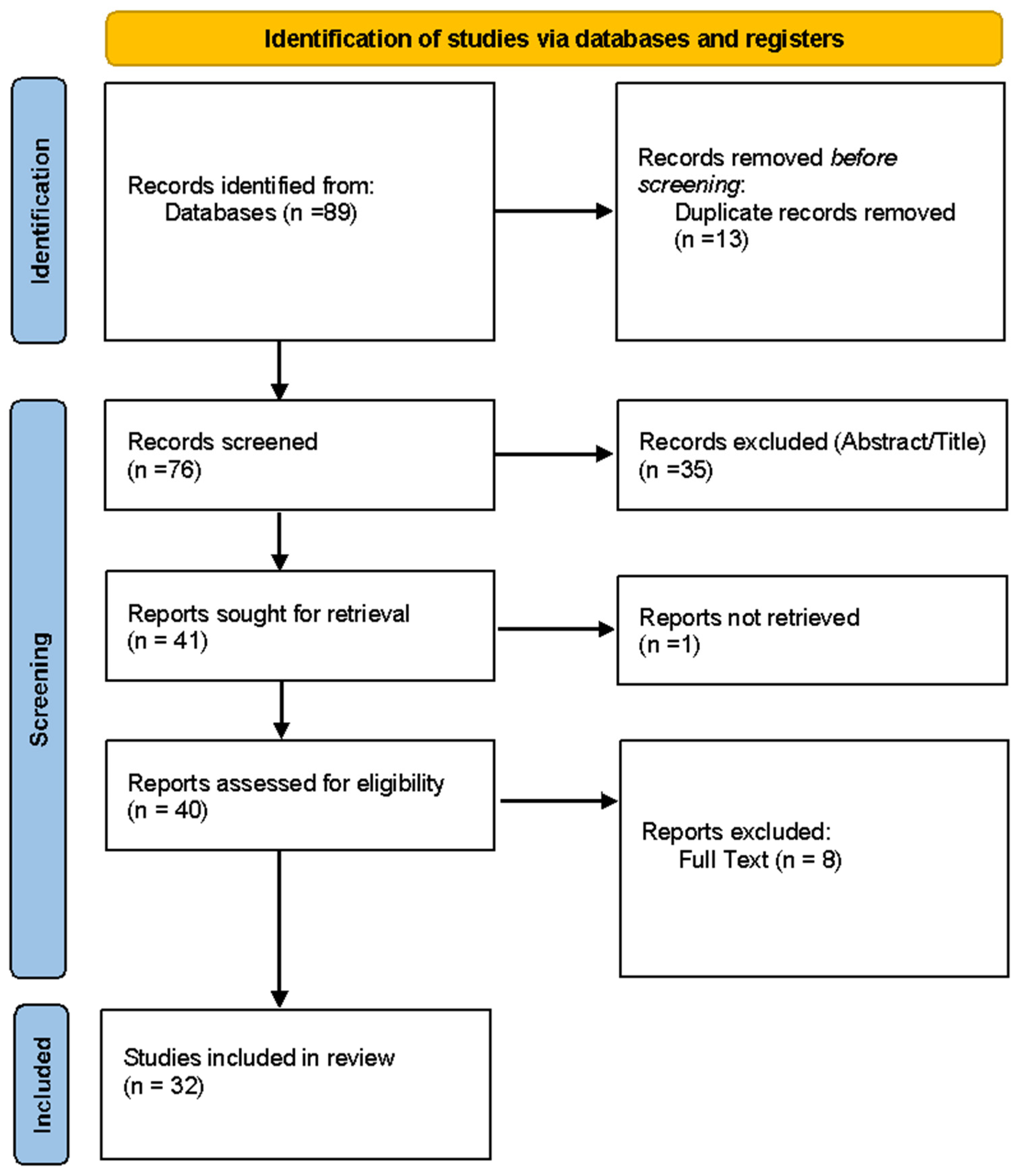
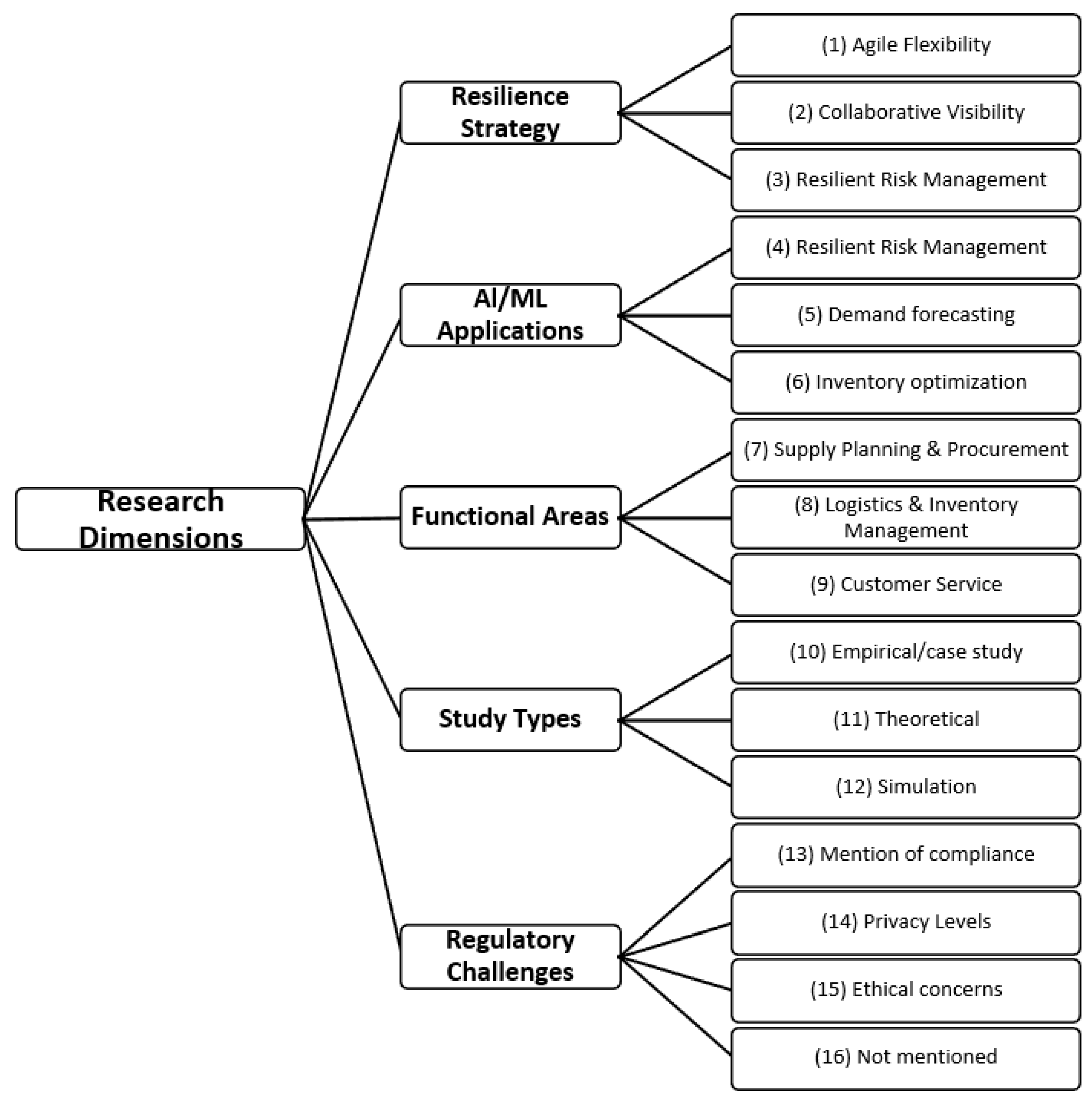


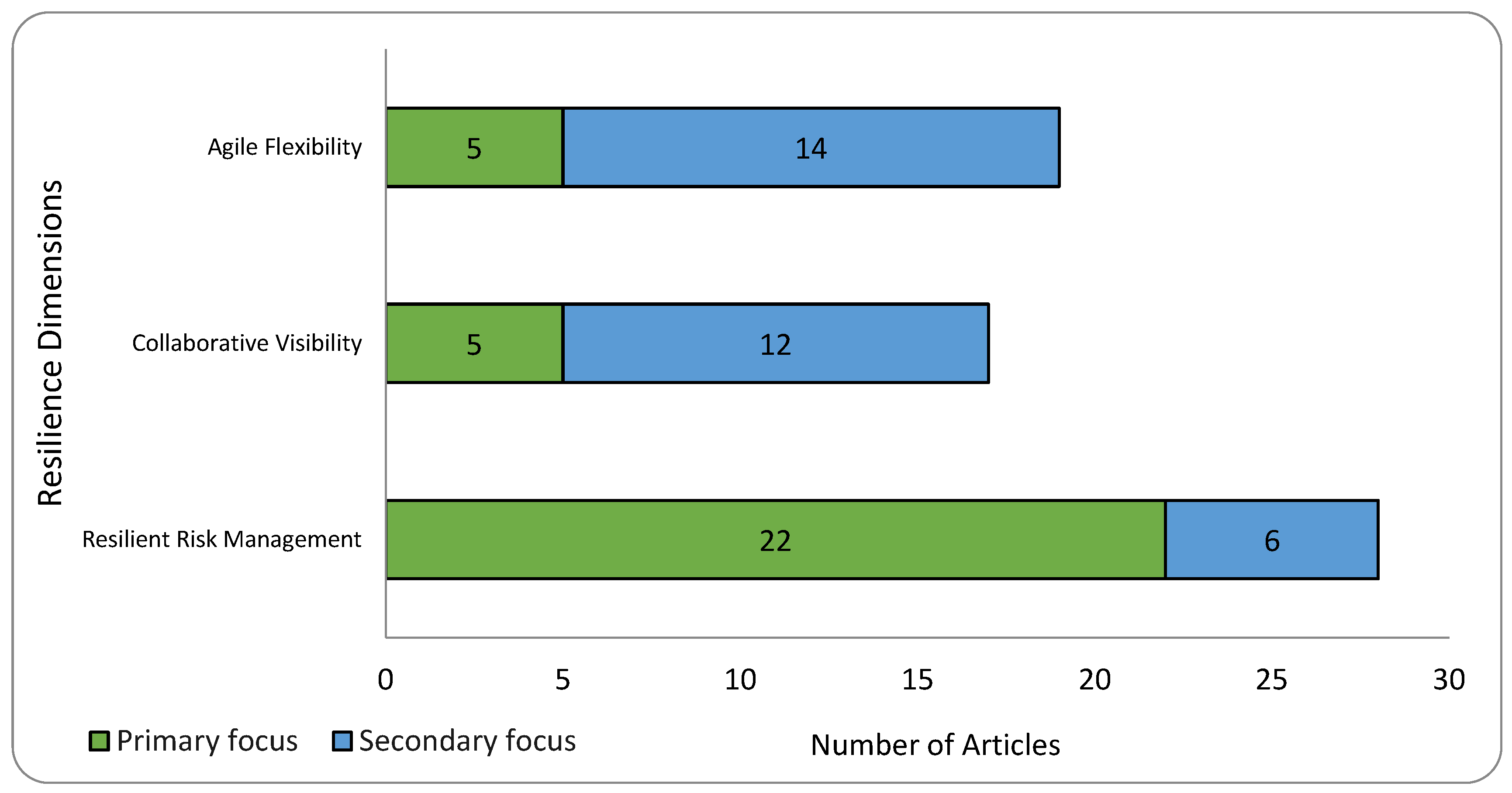
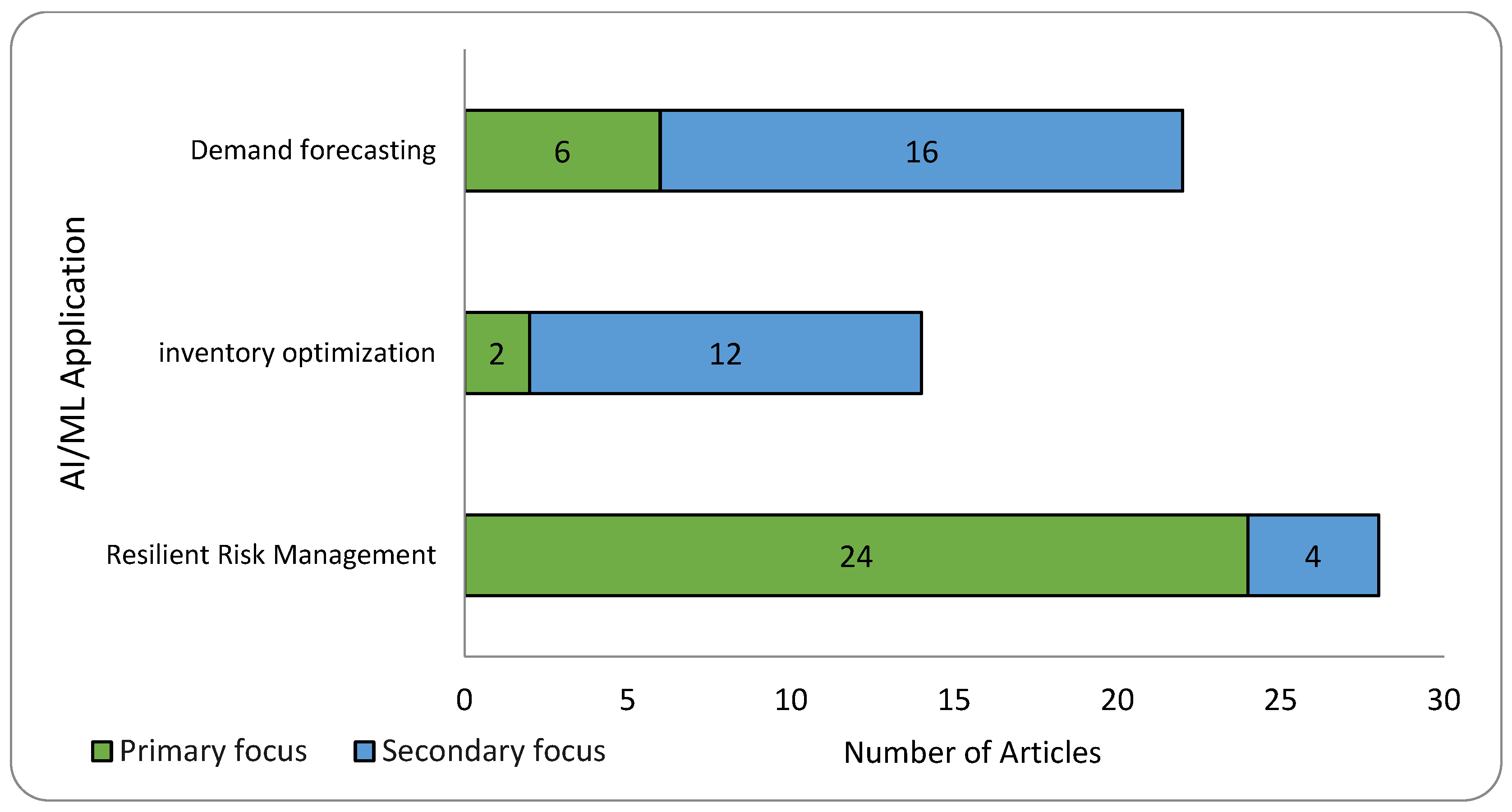
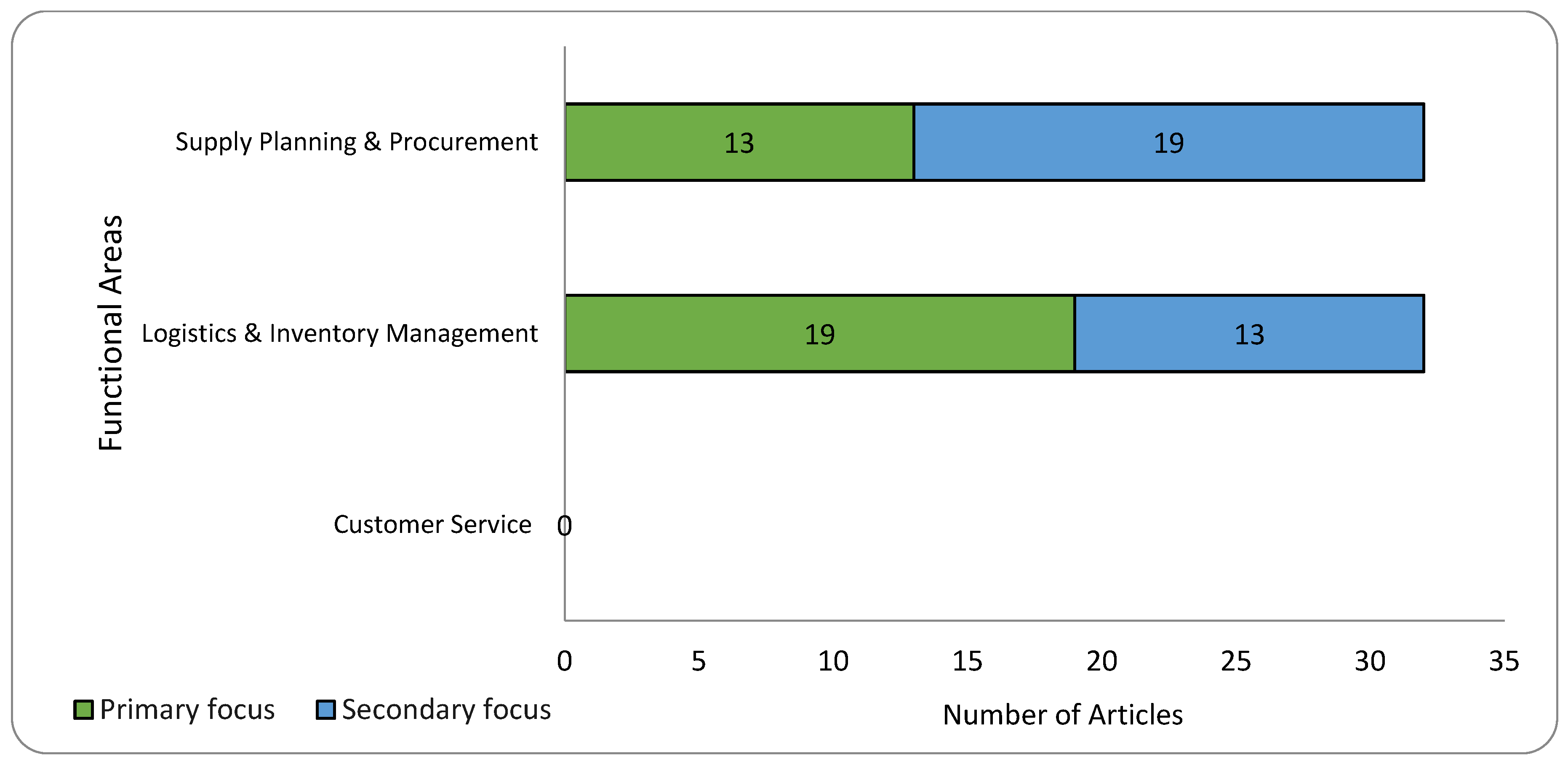
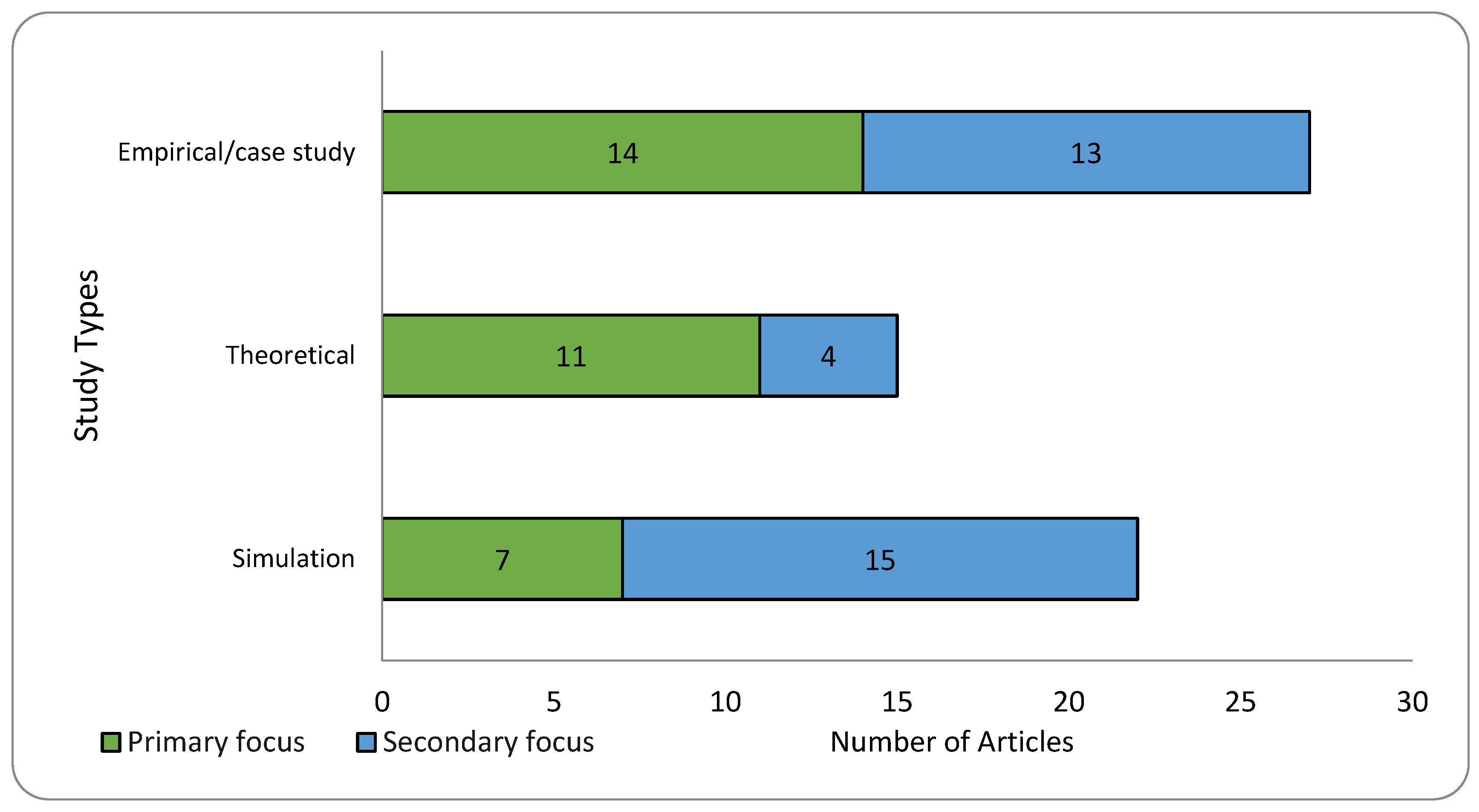

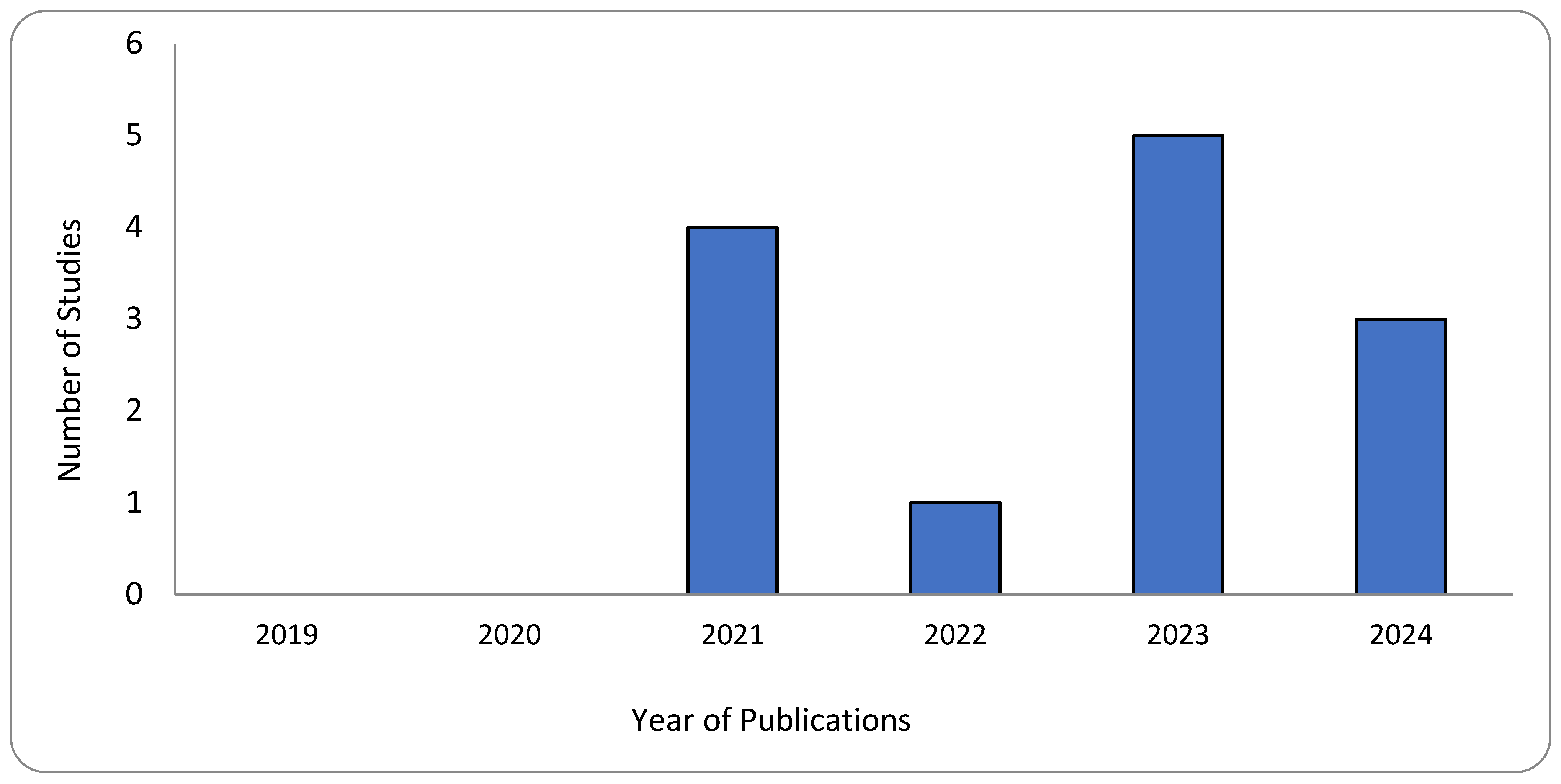

| Reference | Resilience Dimensions | AI/ML Application | Functional Areas | Study Types | Regulatory Challenges | |||||||||||
|---|---|---|---|---|---|---|---|---|---|---|---|---|---|---|---|---|
| 1 a | 2 | 3 | 4 | 5 | 6 | 7 | 8 | 9 | 10 | 11 | 12 | 13 | 14 | 15 | 16 | |
| [7] | * | * | * | * | * | |||||||||||
| [11] | * | * | * | * | * | |||||||||||
| [3] | * | * | * | * | * | |||||||||||
| [18] | * | * | * | * | * | |||||||||||
| [9] | * | * | * | * | * | |||||||||||
| [19] | * | * | * | * | * | |||||||||||
| [20] | * | * | * | * | * | |||||||||||
| [21] | * | * | * | * | * | |||||||||||
| [22] | * | * | * | * | * | |||||||||||
| [23] | * | * | * | * | * | |||||||||||
| [24] | * | * | * | * | * | |||||||||||
| [25] | * | * | * | * | * | |||||||||||
| [26] | * | * | * | * | * | |||||||||||
| [4] | * | * | * | * | * | |||||||||||
| [27] | * | * | * | * | * | |||||||||||
| [28] | * | * | * | * | * | |||||||||||
| [29] | * | * | * | * | * | |||||||||||
| [30] | * | * | * | * | * | |||||||||||
| [31] | * | * | * | * | * | |||||||||||
| [32] | * | * | * | * | * | |||||||||||
| [33] | * | * | * | * | * | |||||||||||
| [34] | * | * | * | * | * | |||||||||||
| [35] | * | * | * | * | * | |||||||||||
| [36] | * | * | * | * | * | |||||||||||
| [15] | * | * | * | * | * | |||||||||||
| [37] | * | * | * | * | * | |||||||||||
| [38] | * | * | * | * | * | |||||||||||
| [39] | * | * | * | * | * | |||||||||||
| [40] | * | * | * | * | * | |||||||||||
| [41] | * | * | * | * | * | |||||||||||
| [42] | * | * | * | * | * | |||||||||||
| [43] | * | * | * | * | * | |||||||||||
| Identified Gap | Corresponding Recommendation |
|---|---|
| Predominant use of supervised learning models; minimal use of deep learning, RL, and NLP (Section 4.4) | Expand exploration of advanced AI/ML techniques such as RL, NLP, and hybrid frameworks. |
| Limited real-world deployment; predominance of theoretical and simulation studies (Section 4.1) | Strengthen practical implementation through pilot programs and industry collaborations. |
| Narrow focus on risk management; underexploration of agile flexibility and collaborative visibility (Section 4.1 and Section 3.3.1) | Develop AI models targeting supply chain agility and collaborative visibility. |
| Insufficient regulatory and ethical considerations (Section 4.2) | Incorporate regulatory compliance and ethical frameworks in AI/ML research design. |
Disclaimer/Publisher’s Note: The statements, opinions and data contained in all publications are solely those of the individual author(s) and contributor(s) and not of MDPI and/or the editor(s). MDPI and/or the editor(s) disclaim responsibility for any injury to people or property resulting from any ideas, methods, instructions or products referred to in the content. |
© 2025 by the authors. Licensee MDPI, Basel, Switzerland. This article is an open access article distributed under the terms and conditions of the Creative Commons Attribution (CC BY) license (https://creativecommons.org/licenses/by/4.0/).
Share and Cite
Al-Hourani, S.; Weraikat, D. A Systematic Review of Artificial Intelligence (AI) and Machine Learning (ML) in Pharmaceutical Supply Chain (PSC) Resilience: Current Trends and Future Directions. Sustainability 2025, 17, 6591. https://doi.org/10.3390/su17146591
Al-Hourani S, Weraikat D. A Systematic Review of Artificial Intelligence (AI) and Machine Learning (ML) in Pharmaceutical Supply Chain (PSC) Resilience: Current Trends and Future Directions. Sustainability. 2025; 17(14):6591. https://doi.org/10.3390/su17146591
Chicago/Turabian StyleAl-Hourani, Shireen, and Dua Weraikat. 2025. "A Systematic Review of Artificial Intelligence (AI) and Machine Learning (ML) in Pharmaceutical Supply Chain (PSC) Resilience: Current Trends and Future Directions" Sustainability 17, no. 14: 6591. https://doi.org/10.3390/su17146591
APA StyleAl-Hourani, S., & Weraikat, D. (2025). A Systematic Review of Artificial Intelligence (AI) and Machine Learning (ML) in Pharmaceutical Supply Chain (PSC) Resilience: Current Trends and Future Directions. Sustainability, 17(14), 6591. https://doi.org/10.3390/su17146591






